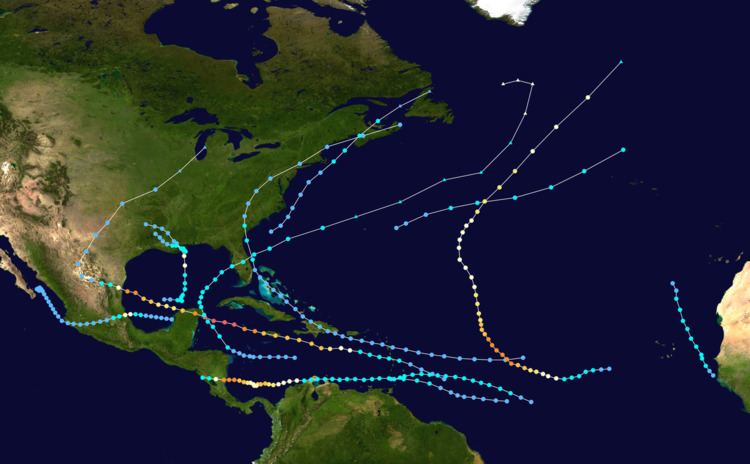 | ||
The 1988 Atlantic hurricane season was an active season during which twelve tropical cyclones formed. The season officially began on June 1, 1988 and ended November 30, 1988, the dates which conventionally limit the period of each year when tropical cyclones tend to form in the Atlantic. This timeline documents tropical cyclone formations, strengthening, weakening, landfalls, extratropical transitions, as well as dissipations during the season. The timeline also includes information which was not operationally released, meaning that information from post-storm reviews by the National Hurricane Center, such as information on a storm that was not operationally warned upon. This season produced 19 tropical depressions, of which 12 became named storms; 5 attained hurricane status, of which 3 became a major hurricane, a storm that ranks as a Category 3 or higher on the Saffir-Simpson Hurricane Scale. The most notable storm in 1988 was Hurricane Gilbert, which was at the time the most intense hurricane in the Atlantic on record. Hurricane Gilbert caused about $5 billion in damage and 300 fatalities. The other notable storm was Hurricane Joan, which struck Nicaragua as a category 4 hurricane, and caused about $2 billion in damage and about 200 fatalities. Joan crossed into the Pacific and was renamed Miriam. Both Gilbert and Joan were retired by the World Meteorological Organization in the spring of 1989 and were replaced by Gordon and Joyce in 1994.
